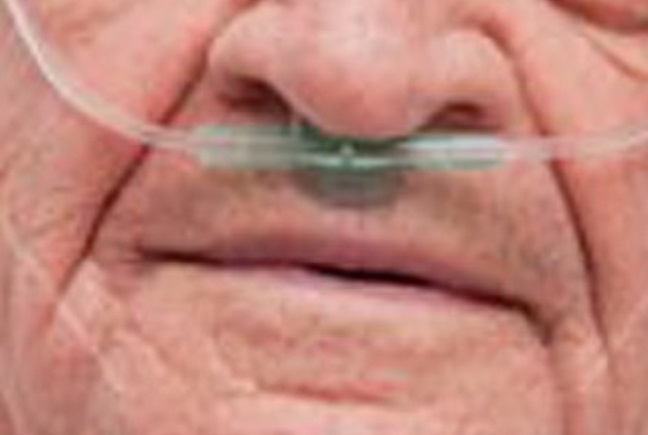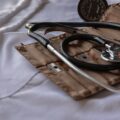Few people are aware that we have in the body many examples of rhythmic changes referred to as cycles. Even fewer are aware that there is a relationship between breathing through the nose and brain activity, referred to as the nasal cycle. The cycle was discovered by Richard Kayser in 1895. He noted that there was a predictable pattern of swelling and shrinkage in the mucosal lining of the nose, although he had no idea of its purpose.
The nasal cycle is usually unnoticed as alternating partial congestion and decongestion of the nasal cavities. It is a physiological congestion of erectile tissue covering the turbinates, the bony projections within the nostril. The erectile tissue is similar to that in the genitalia. The turbinates in one nostril fill up with blood while the opposite turbinates decongest by shunting blood away. This cycle is controlled by the autonomic nervous system (ANS) and has a mean duration of 2 1/2 hours. It is further documented that when a person is lying on one side, the nostril on the same side will become congested. Normally this is also unnoticed. However, my clinical experience is that this effect becomes recognized consciously by patients whose ANS is in a more excitable state.
For example, the left nostril becomes noticeably congested when the person is lying on the left side, but clears as he/she turns to the right side. The right nostril then becomes congested. I had noted this as an important symptom of dysautonomia (abnormal exaggeration of ANS activity) and always asked the patient routinely whether this had been consciously recognized when going to bed. It became an important clue to recognizing that the symptoms reported by the patient were caused by ANS dysfunction. I was frequently able to prove that the patient was deficient in vitamin B1 by means of a blood test and the symptom disappeared with administration of pharmacologic doses of the vitamin. I also became aware that even minor energy deficiency in brain affects the ANS, signaling symptoms that are usually ignored or attributed to other causes by physicians. I also learned that the smartest people were more at risk. This, at first sight, appears to be ridiculous until you realize that the brain consumes an enormous amount of energy. If a person is endowed with a brilliant brain, the energy requirement will be proportional. Although the purpose of the nasal cycle is unknown, it is important to recognize that it has a mechanism mediated through the ANS.
Nasal Congestion and the Autonomic Nervous System
The voluntary nervous system is that which we all recognize as being the mediator of conscious action. The ANS regulates all the automatic functions of the body and operates below the conscious level. It is this system that is involved with the nasal cycle. From an anatomical point of view, we know that the voluntary nervous system and the ANS are connected at various locations in the body. Thus, an event that is normally below conscious level may become noticed consciously through the “conversation” between the two nervous systems.
The ANS consists of two different parts. One is referred to as the sympathetic component and its best known action is the fight-or-flight reflex. I like to refer to it as the “action organization system”, because it prepares us to face literally any form of stress that demands a mental or physical response. The response acts below the conscious level and may not enter consciousness at all until the action is completed, when the sympathetic activity is withdrawn.
The other part of the ANS, known as the parasympathetic, now takes over and governs the body. I like to call this the “rest and be thankful system” because it permits the brain to regulate all the automatic functions of body organs when we are in a place of safety. Note that “chronic stress” such as worry over meeting a deadline in business, prolonged mental/physical activity or pain will keep the sympathetic nervous system action going with varying degrees of effect. Thus, nasal congestion in a stressed person may be called “an allergy”, or “coming down with a cold”. To recognize it as a symptom of dysautonomia would demand a drastic change in concept. In our book “Thiamine Deficiency Disease, Dysautonomia and High Calorie Malnutrition“, a child is described who had chronic asthma and responded to pharmacologic doses of thiamine. Again, at first sight and in the light of our present disease model, this would be unbelievable unless there is a realization that the bronchial tubes are also under the command of the ANS. Moderate lack of cellular energy in the lower part of the brain from any cause activates the ANS because of its recognition of danger.
The Honeymoon Nose
Because of the erectile tissue in the nose, as described above, there is a phenomenon known as the “Honeymoon nose”. The nasal lining becomes congested after prolonged sexual stimulation, the hallmark of emotional stress. Even without any form of required action, there is a normal flux in the ANS between the sympathetic and parasympathetic actions reflected in the nasal cycle. Although we have no idea about this, in a state of normal health we breathe through one dominant nostril that switches to the other nostril every 2 to 2 1/2 hours, regulated by this flux in the ANS. The nasal congestion associated with a cold may well be an exaggeration of ANS activity as a response by the brain to the virus as a form of stress.
Brain Involvement in Nasal Cycles
The electroencephalogram (EEG) is used to indicate electrical activity in the brain. It was found that alternating dominance of cerebral hemispheric activity in humans could be demonstrated through this instrument. Not only that, relative changes in electrical activity had a direct correlation with changes in the relative nostril dominance, the nasal cycle. Later, these authors showed that forced nostril breathing in one nostril produces a relative increase in the electrical waves of the EEG in the contralateral (opposite) hemisphere, a technique long used by Yogis as brain stimulation. There is also evidence of central regulation of intraocular (eyes) pressure. It was demonstrated that forced unilateral nostril breathing led to a significant decrease of intraocular pressure in 46 patients with both open and closed angle glaucoma (two types).
Relatively greater cognitive ability in one hemisphere (e.g. right brain) corresponds to unilateral forced nostril breathing in the contralateral nostril (e.g. left nostril) A similar effect was found in studying 51 right-handed undergraduate psychology students and the authors suggested that the yogic breathing technique may have a useful application in treating psychophysiological disorders and disorders with autonomic abnormalities.
Conclusions
We are indeed wondrously made. We live our lives with a complete ignorance of what makes us tick. We are unaware that there are literally millions of signals between the brain and the body that enable us to survive as fragile organisms in a complex hostile environment. The nasal cycle is an excellent illustration of this and the knowledge of its activity should give us a new perspective about the reality of health and disease. It surely makes us realize that the brain is really the personality and the body is merely a chassis that carries the brain around. It enables us to understand that a cripple living his life in a wheelchair can experience the joy of living, depending on his acceptance of his situation.
We Need Your Help
More people than ever are reading Hormones Matter, a testament to the need for independent voices in health and medicine. We are not funded and accept limited advertising. Unlike many health sites, we don’t force you to purchase a subscription. We believe health information should be open to all. If you read Hormones Matter, like it, please help support it. Contribute now.












Dr.Lonsdale,
I believe that I may have ANS dysfunction as described in this article. I hope my condition can be reversed if I am in fact B1 deficient. I ve been suffering with what doctors call nonallergic idiopathic rhinitis for over 10 years with negative allergy tests, perfectly straight septum and never any nasal discharge or sinus infections. They even did turbinate reduction surgery which did not improve my condition. I wake multiple times per night feeling completely blocked in the lower nostril, flip over and shortly after I m completely blocked in that side. The sensation of being completely blocked fir me us so pronounced that it wakes me out of a sound sleep. Sometimes I m dreaming I m suffocating. Other things to consider is that I have IBS and I had a blasto parasite in 2005 for which i did two courses of cipro. Had IBS ever since. The chronic congestion started around the same time. I’d love any advice you can send my way. I will gladly support HM and spread the word about the site!
Thank you,
Katharine
Hi Katharine. I don`t see a reply here from Dr. Lonsdale. I seem to suffer from the same nightly congestion issues, the exact same symptoms ( with out the IBS ) every night for many years and even with Turbinate Surgery as well , I have no relief. I`m up every night at the same time because my cycle of congestion is simply overwhelming and all I do is toss and turn to try and find some relief. it`s awful. if you have found a solution from Dr. Lonsdale ( or any other Doctor ) and can advise that would be greatly appreciated.
Hi Dr Lonsdale,
I stumbled across this article while researching nasal turbinates a little while ago. My adolescent son constantly has a congested and/or drippy nose and a specialist I was seeing wanted to perform surgery to fix the problem. I’m not a fan of surgery, and upon reading this article found that it ticked many boxes for issues he has – he’s highly emotional, and often in a state of fight or flight, has asthma and having had life saving surgery as a newborn on his intestines I thought perhaps he has not been able to absorb the thiamine he needs through our regular (pretty healthy) diet. I therefore left the specialist (he cut ties with us as I didn’t follow his advice) and found a nutritionist who was open to the idea but openly admitted they didn’t know much about B1. Upon their advice I tried my son on a B complex (which didn’t make any difference) and then on 50mg daily of B1 for about 2 months. He found it made a marginal difference, but not what I had hoped for. The supplements we were given were thiamine hydrochloride – which of course is different to the TFFD that you recommend here, so I was thinking of just ordering them myself to see if that made a greater improvement to his health. I do wonder though, if he may still have problems with absorption due to his history? Also, I note in other articles you’ve mentioned that there should normally be additional supplements along with the thiamine – maybe magnesium? The only other thing I give him on a regular basis (apart from medication for his asthma) is melatonin as he has troubles sleeping.
Thanks for any help.
This is a very important post. The subject is an adolescent who had GI surgery at birth and this may have caused the clinical havoc that followed. I will deal with each of his many symptoms one by one.
1. He is “highly emotional” indicating a pseudo hypoxic state (thiamine deficiency TD) of the hind brain. 2. He has asthma, indicating imbalance of the autonomic nervous system affecting the bronchial tubes from TD. 3. A permanently “drippy nose” indicating pathology of the autonomic control of the nasal cycle from TD. 4. Trouble sleeping from TD. We need energy to sleep. 5. Failure to get benefit from B complex and a trivial response from 50 mg thiamine.
We do not know what he eats or drinks when he meets his friends ? at the soda fountain. Soft drinks, like alcohol can cause TD.
Conclusion: this is flagrant thiamine deficiency in the hind brain that controls the autonomic nervous system. The intestinal surgery may have upset the microbiome causing a disastrous malabsorption of thiamine giving him GI beriberi. Or there may be a genetically determined absence of a thiamine transporter.
The solution is almost certainly a supplement of Lipothiamine. This does not need a transporter and is enteric coated to get it past the stomach acid into the jejunum where the coating is removed and thiamine absorption occurs. Start with 50 mg (1tablet) a day and if there is paradoxical worsening of symptoms, maintain that dose until paradox gives way to improvement. The dose can then be increased and titrated to symptom improvement. This should be accompanied by 125-250 mg of magnesium taurate or a similar salt. Please read about paradox on Hormones Matter. If you need more information buy our book advertised on HM. Ultimately, the asthma will cease, emotions will be healthy and he will sleep. If all this happens, perhaps his natural skepticism will cease and you all will be introduced to the fallacies of modern medicine.
Hey I was wondering there’s two different TTFD supplements on amazon, Allithiamin by Ecological formulas and Lipothiamin by Cardiovascular research. Does thiamin need an enteric coating like lipothiamkn or is it stable through gastric juices?
Both of these derivatives of thiamin are exactly the same and are sold by the same vendor. Allithiamine was the original preparation of thiamin tetrahydrofurfuryl disulfide (TTFD). Some years ago I suggested to the CEO that perhaps an enteric coated preparation might protect the TTFD as it passed through stomach acid, and hence a new product and a new name, Lipothiamine. The essential point is this; thiamin is absorbed from the jejunum, the first part of the intestine after the stomach. Both of these products have only one objective, to get thiamin into body cells. In my discussion of the subject with the CEO, we both agreed that it was likely for Lipothiamine to be a more efficient delivery system because the enteric coating would be removed in the jejunum. Note however that this has not been tested experimentally and both products can be considered virtually to have the same objective.The choice between the two matters little. The main thing is for their use to be under the care of a physician who has an understanding of the principles involved. I am afraid that they are at present “rare birds”. I have come to the conclusion that writing in medical journals about this reaches only a few inquisitive medical minds. That is why I try to write on this website with an attempt to break down the technical issues so that intelligent readers can make their own decisions and hopefully pass the information on to their physicians. It is a “lonely” journey but I hope that a few people, also known as “problem patients” will benefit.
Hi Doctor Lonsdale,
Your latest comment raises a good question. Are there any practicing physicians that you are aware of who understand your work and can help guide patients through the process? Finding an understanding physician who is willing to experiment is one thing, but it would be wonderful to know of physicians who already know the details and have worked with thiamine issues before. I am sure a lot of people would be willing to travel if necessary.
Best,
James
Avalox Is one of the fluoroquinoline group of antibiotics that damage mitochondria.The clues are nerve pain in the feet, postural tachycardia and upper G.I. dysfunction that spells out a severe degree of thiamin deficiency. Of course, the first thing would be to prove it but in my view the testing procedure appears to be unavailable because measuring the blood thiamin is useless. When you tried B complex you did indeed get a paradoxical result and if you attempt to use Lipothiamine, you will undoubtedly experience paradox again. You will have to push through this if you are to get benefit and it might take as much as a month or so. You should take it with B complex, magnesium and a well-rounded multivitamin. Make your physician aware of what you want to do and do it under his supervision. If he refuses to listen, try to find a physician who will. None of this stuff is in my imagination. It is all in the medical literature and available for anybody who wants to read it
Thank you Doctor Lonsdale, I sincerely appreciate the reply. I am currently on a low dose of Trintellix, a new SSRI and have experienced modest benefit. Would I need to come off first? In the past I also had a significant paradoxical reaction to CoQ10 that resulted in very significant agitation and tachyardia. Can mitochondria essentially become sensitized? Also, I am curious if you have looked into the recent attention being given to nicotinamide riboside, a NAD precursor and its use for mitochondrial dysfunction? Again, thank you so much for your response.
James ask some important questions. First, let me say that the mechanism of SSRI’s in the treatment of depression is poorly understood. He asks whether he should stop the drug before attempting nutrient therapy. Let me answer that by saying that if you manage to improve energy metabolism in any way through the use of nutrients, the cells become more efficient in their function and one would expect them to react more to any drug that is being given concurrently. That is why therapeutic vitamins are sometimes referred to as “pro-drug” substances. In short, drug and nutrient therapy are incompatible in my view. However, stopping a drug suddenly sometimes precipitates the very symptoms for which the drug is being used. I wish that any advice that I give here would “ring bells” in the ears of a physician, but seldom does. To most physicians, this is “quackery”. Lastly, NAD is vital in energy metabolism but does not take the place of thiamin because they are both members of a vast team.
Paradox
I have discussed this previously on this website. I have called it paradox because it is exactly the opposite of what a patient expects. James reports his reaction to CoQ10. Put simply, the symptoms return “in spades” and last for a variable time when the nutrient is continued. At some time that is unpredictable, the symptoms disappear because the cell chemistry is gradually being improved. We are brainwashed to expect that any reaction to a “medication” is a side effect and the natural inclination would be to stop taking the nutrient based on this assumption. It is another example of major differences that must be faced as we become acquainted with a concept that goes back to Hippocrates in 400 BC when he said “let food be your medicine and your medicine be your food”. As you read these posts, bear in mind that we are providing advice on the use of naturally occurring nutrients. It is true that we are advocating their use in a pharmaceutical sense, but we are providing the advice, based on a knowledge of cellular biochemistry, particularly related to cellular energy production.
Hi Dr. Lonsdale,
Thanks for continuing to publish fantastic articles. I have been ill for about 7 years following a severe reaction to Avelox and a lifetime of sinus infections and chronic antibiotic use. While I have made some improvements, I am still stuck with nerve pain in my feet (normal EMG though), fasiculations, postural tachycardia, upper GI dysfunction and more recently burning red hands that come and go. Only abnormal blood work is low creatine kinase levels and abnormal hida scan. Doctors have given up so I am on my own at this point. Can I safely trial Lipothiamine or Allithiamine along with magnesium to see if it leads to a symptom improvement? Recently trialing a low dose of a standard B complex has led to an exacerbation of anxiety and agitation. Perhaps a healing paradox that you have mentioned? I would sincerely appreciate your input.